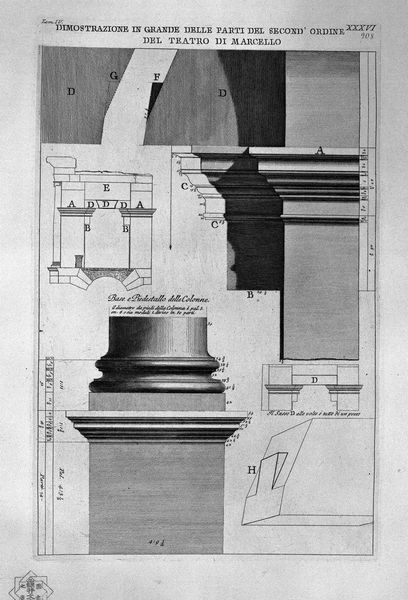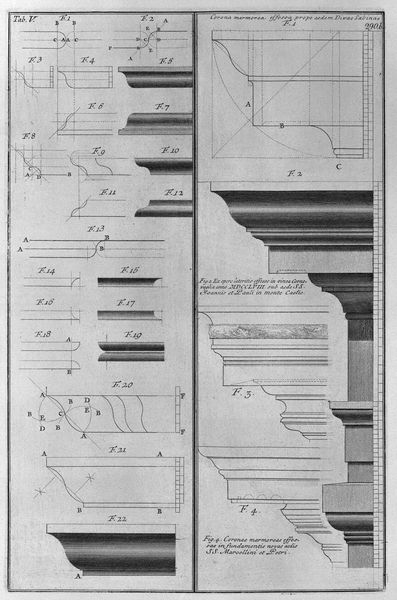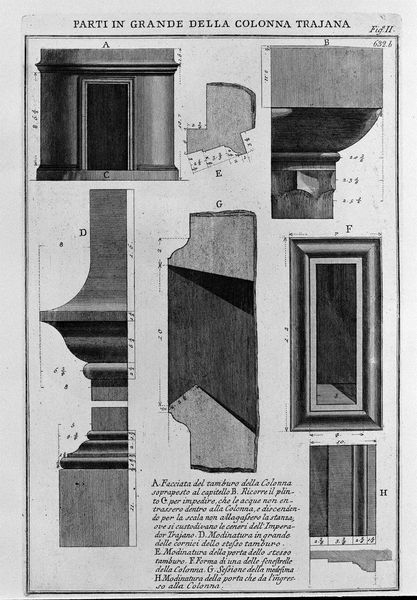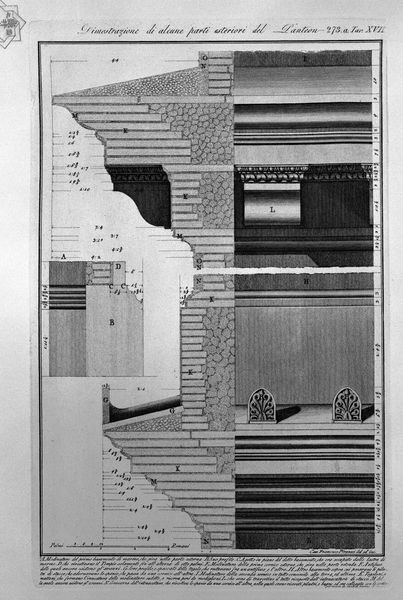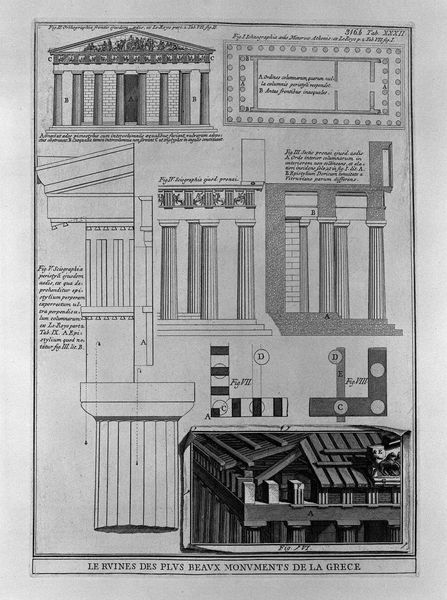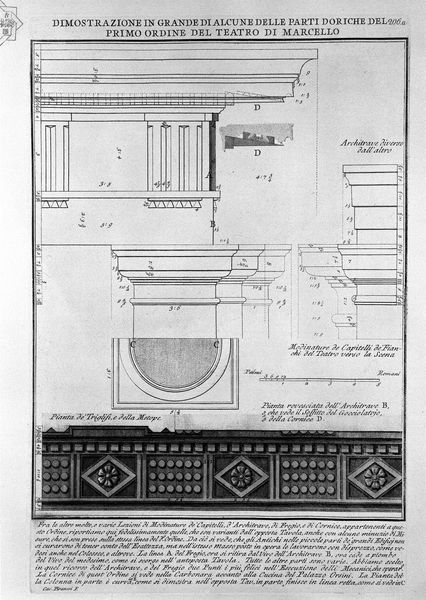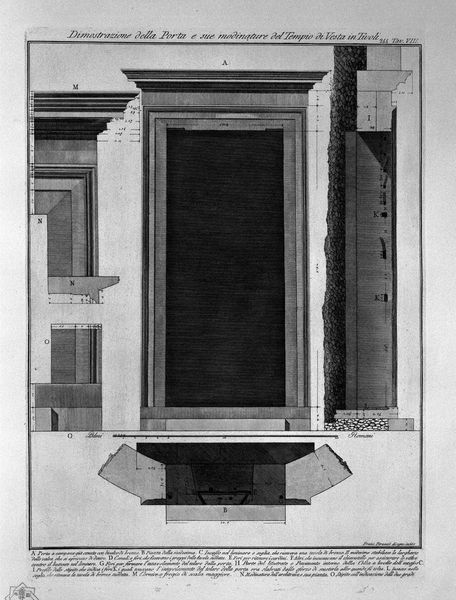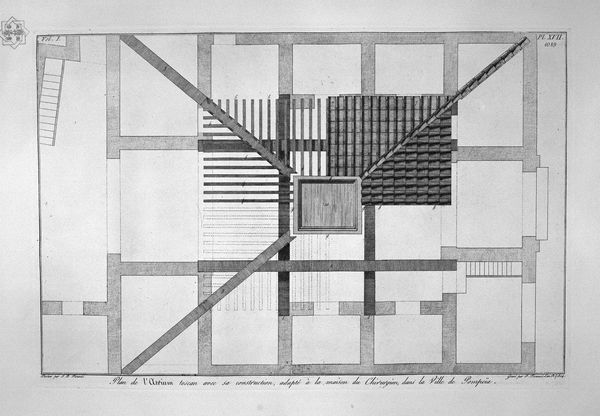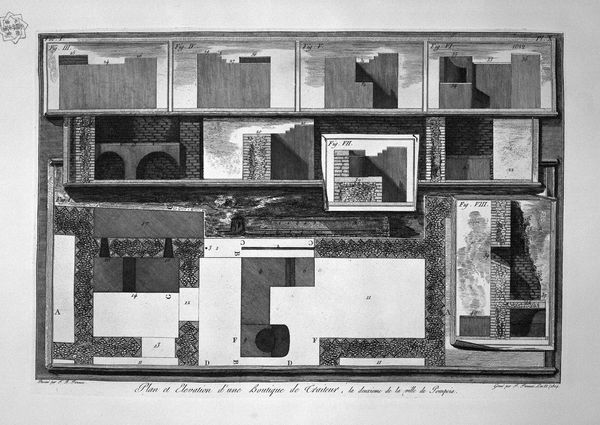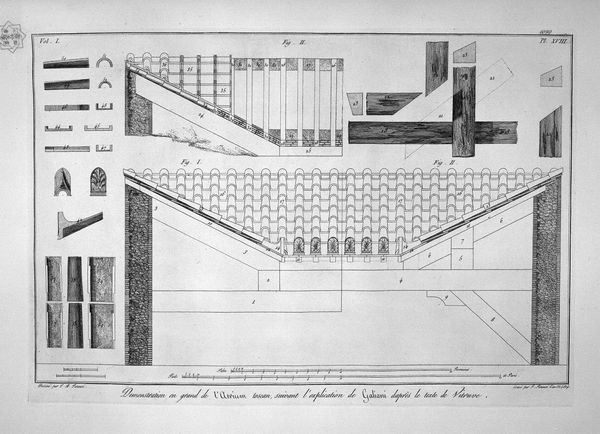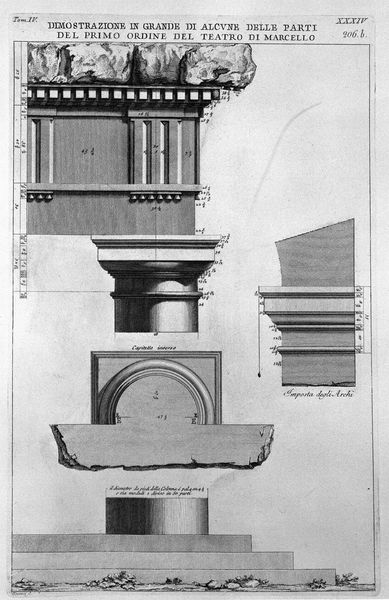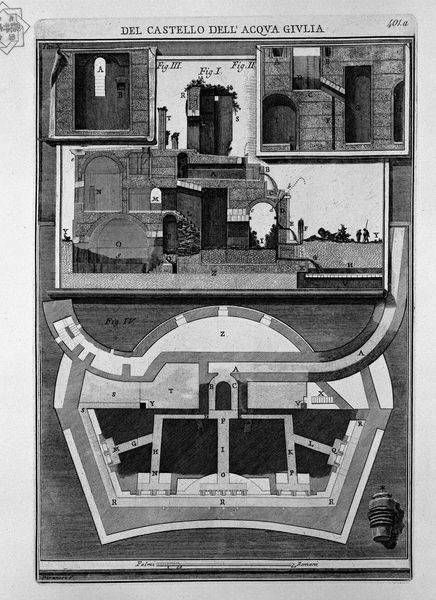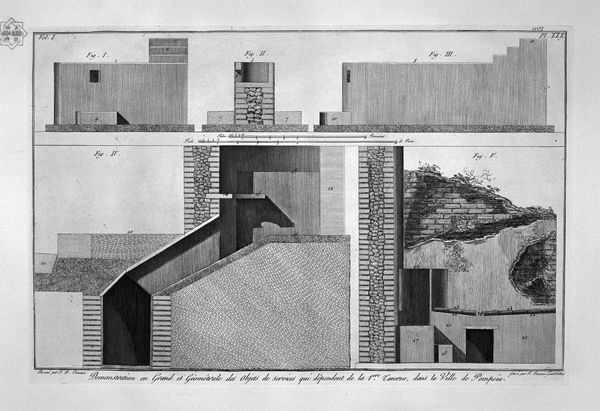
drawing, print, etching, engraving, architecture
#
drawing
#
neoclacissism
#
architectural landscape
# print
#
etching
#
classical-realism
#
form
#
geometric
#
arch
#
line
#
engraving
#
architecture
#
monochrome
Copyright: Public domain
Editor: Here we have "Demonstration in large parts of the exterior of the Pantheon," by Giovanni Battista Piranesi, rendered as a print in etching, engraving, and drawing media. It is a rather academic and systematic portrayal... What can you tell me? Curator: Ah, Piranesi! He wasn't just depicting buildings; he was reinventing Rome, brick by imagined brick. See how he isolates these architectural details, almost like specimens? They are both precise records, and... I don't know... almost fetishized. What do you think, do you see a coldness, a love? A little of both? Editor: There’s definitely precision. But fetishized? Hmm… Maybe in the obsessive detail? What purpose did this kind of drawing serve at the time? Curator: Piranesi tapped into this burgeoning Neoclassical hunger, didn't he? People wanted to *know* antiquity, to dissect its grandeur. These weren't just souvenirs; they were blueprints for a new aesthetic. Piranesi offered access – a visual encyclopedia of aspiration! The arches, the cornices – how can one not be stirred! But what is most impressive is that it is all presented in monochrome tones with geometric lines. What’s your take? Editor: I didn’t think about the Neoclassical trend, but this does look like a page in a handbook. Thank you; I’ll look at Piranesi with new eyes from now on! Curator: My pleasure! Think of Piranesi as less an architect and more a... dream weaver, translating stone into fantastical visions! And let your own dreams run rampant!
Comments
No comments
Be the first to comment and join the conversation on the ultimate creative platform.
